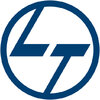

Indian Space Research Organisation




50+ Indian Space Research Organisation Interview Questions and Answers
Q1. What is the minimum temperature of any substance that we could reach and use it for practical purposes?
The minimum temperature of any substance that we could reach and use for practical purposes is absolute zero, which is -273.15 degrees Celsius or 0 Kelvin.
The minimum temperature is known as absolute zero.
It is the lowest possible temperature that can be reached.
At absolute zero, all molecular motion ceases.
Practical applications include cryogenics and superconductivity.
Examples of practical uses are in medical imaging, particle accelerators, and space exploration.

Q2. What would you like to do? ( Design of rockets or design of electronic components with heat transfer applications) Then
I would like to design electronic components with heat transfer applications.
I have a strong interest in electronics and how heat can be managed in electronic systems.
I enjoy working on projects that involve designing and optimizing electronic components for efficient heat dissipation.
I have experience in conducting thermal analysis and simulations to ensure proper heat transfer in electronic devices.
I find it fascinating to explore innovative ways to improve heat dissipation...read more

Q3. IC engines- Spark plug, how combustion takes place, what is dtsi, why is it used, Types of engines- 2 stroke vs 4 stroke
Spark plug ignites fuel-air mixture in IC engines. DTSI improves combustion efficiency. 2-stroke and 4-stroke engines differ in number of strokes per cycle.
Spark plug ignites the fuel-air mixture in the combustion chamber
DTSI (Digital Twin Spark Ignition) is a technology used to improve combustion efficiency by using two spark plugs
2-stroke engines complete one power stroke in two strokes of the piston, while 4-stroke engines complete one power stroke in four strokes of the p...read more

Q4. Humidity ratio- how is it measured? ( Two types) What does 1 ton refrigerator mean? Parts of refrigeration cycle? Which is the smallest component?
Humidity ratio is measured using two types of instruments: psychrometers and hygrometers.
Psychrometers measure humidity ratio by comparing the readings of two thermometers: a dry-bulb and a wet-bulb thermometer.
Hygrometers measure humidity ratio using various principles such as electrical resistance, capacitance, or condensation.
A 1 ton refrigerator refers to the cooling capacity of the refrigerator, which is equivalent to removing 12,000 British Thermal Units (BTUs) of heat ...read more

Q5. How many laws of thermodynamics? Applications of each of them. What is dB Amp
There are three laws of thermodynamics. Each law has specific applications. dB Amp is not related to thermodynamics.
The first law of thermodynamics, also known as the law of energy conservation, states that energy cannot be created or destroyed, only transferred or transformed.
The second law of thermodynamics states that the entropy of an isolated system always increases over time.
The third law of thermodynamics states that as the temperature approaches absolute zero, the ent...read more

Q6. What material will you choose Al or Mg for designing and why? What is concurrent engineering?
The choice between Al and Mg for designing depends on the specific requirements and constraints of the project.
Aluminum (Al) is lightweight, corrosion-resistant, and has good thermal conductivity, making it suitable for applications where weight reduction is important, such as aerospace.
Magnesium (Mg) is even lighter than aluminum, but it has lower strength and is more prone to corrosion. It is commonly used in automotive components to reduce weight and improve fuel efficienc...read more

Q7. What is difference between rocket and missile?
A rocket is a vehicle that propels itself through the atmosphere or space, while a missile is a weapon that is guided towards a target.
Rockets are used for space exploration, satellite launches, and transportation, while missiles are used for military purposes.
Rockets are typically unmanned and used for peaceful purposes, while missiles are often armed and used for warfare.
Rockets are designed to carry payloads such as satellites or scientific instruments, while missiles are ...read more

Q8. HOW DO YOU CONVERT A VOLTMETER TO AMMETER ? WHAT ARE THE CHANGES TO BE DONE FOR DOING THAT? DRAW THE RELEVANT CIRCUIT?
To convert a voltmeter to an ammeter, a shunt resistor is added in parallel to the meter to measure current instead of voltage.
Add a shunt resistor in parallel to the voltmeter to convert it to an ammeter.
Calculate the shunt resistor value using Ohm's Law (R = V/I) based on the desired current range.
Connect the shunt resistor in parallel to the voltmeter with proper polarity.
Ensure the shunt resistor has a low resistance value to minimize voltage drop and accurate current mea...read more


Q9. EXPLAIN SYNHRONOUS MOTOR STARTING METHODS ? WHY IT IS NOT SELF STARTING ?
Synchronous motors require external starting methods due to their design and characteristics.
Synchronous motors need to be brought up to synchronous speed before they can start operating efficiently.
Common starting methods include using a pony motor, damper winding, or a frequency converter.
Synchronous motors are not self-starting because they operate at a fixed speed determined by the frequency of the power supply.
The rotor of a synchronous motor must be rotating at the same...read more

Q10. Types of counters, to design a divide by 5 counters
There are several types of counters that can be used to design a divide by 5 counter.
Ripple counter
Synchronous counter
Johnson counter
Ring counter

Q11. WHY SERIES MOTOR SHOULDN'T BE STARTED WITHOUT NO LOAD?
Series motor shouldn't be started without no load to prevent damage due to high starting current.
Starting a series motor without a load can result in high starting current which can damage the motor windings.
Without a load, the motor can run at dangerously high speeds which can also lead to damage.
The absence of a load can cause the motor to overheat due to lack of cooling.
Starting a series motor without a load can also cause mechanical stress on the motor components.
It is im...read more

Q12. Wind tunnels, materials & their properties
Wind tunnels are used to study the effects of air on objects. Materials and their properties play a crucial role in wind tunnel experiments.
Wind tunnels are used to simulate the flow of air around objects, allowing scientists to study aerodynamics.
Different materials have different properties that can affect the results of wind tunnel experiments.
Materials with low drag coefficients, such as smooth metals, are often used in wind tunnel testing.
Understanding the properties of ...read more

Q13. WHY CT SECONDARY SHOULD NOT BE OPEN CIRCUITED?
CT secondary should not be open circuited as it can lead to dangerous high voltage spikes and damage the equipment.
Open circuiting the CT secondary can lead to dangerous high voltage spikes due to no current flow.
It can damage the CT and other connected equipment.
It can also lead to inaccurate measurements and incorrect readings.
Short circuiting the CT secondary is a safer option to prevent high voltage spikes.
Proper grounding and connection of the CT secondary is essential f...read more

Q14. DRAW THE SINGLE LINGE DIAGRAM OF POWER TRANSMISSION AND DISTRIBUTION?
A single line diagram is a simplified representation of a power system showing the main components and their connections.
Single line diagrams show the main components of a power system such as generators, transformers, transmission lines, and distribution lines.
Each component is represented by a simple symbol with lines connecting them to show how they are interconnected.
For example, a generator is represented by a circle with a line extending from it to a transformer symbol....read more

Q15. TYPE OF LIGHTING SYSTEM ADOPTED IN PETROL PUMP STATIONS?
Most petrol pump stations use LED lighting systems for energy efficiency and cost savings.
LED lighting systems are commonly used in petrol pump stations
LED lights provide bright and uniform illumination for safety and security
LED lights are energy efficient and cost effective, saving on electricity bills
LED lights have a longer lifespan compared to traditional lighting systems
Some petrol pump stations may also use solar-powered lighting systems for sustainability

Q16. DIFFERENT TYPES OF SPEED CONTROL METHODS IN DC MOTOR?
Different types of speed control methods in DC motor include armature voltage control, field flux control, and armature resistance control.
Armature voltage control: Adjusting the voltage applied to the armature to control speed.
Field flux control: Changing the field flux to regulate the speed of the motor.
Armature resistance control: Varying the armature resistance to adjust the speed of the motor.

Q17. DESCRIBE ARC QUENCHING IN SF6 CIRCUIT BREAKER?
Arc quenching in SF6 circuit breaker involves the use of sulfur hexafluoride gas to rapidly extinguish the arc.
SF6 gas is used as the quenching medium due to its high dielectric strength and excellent arc-extinguishing properties.
When the circuit breaker detects an arc, the SF6 gas is rapidly injected into the arc zone to cool and extinguish it.
The high thermal conductivity of SF6 helps in quickly dissipating the heat generated by the arc.
SF6 gas also has a high electronegati...read more

Q18. EXPLAIN ABOUT PERMANENT LOSSES IN TRANSFOMER?
Permanent losses in transformers refer to losses that occur continuously during operation and cannot be recovered.
Permanent losses include core losses (eddy current and hysteresis losses) and copper losses (due to resistance in windings).
Core losses are constant and occur even when the transformer is idle.
Copper losses increase with the load on the transformer.
Permanent losses result in reduced efficiency and increased heating of the transformer.
Examples of permanent losses i...read more

Q19. How and where you apply mathematics in your field if you are a maths student.
Mathematics is applied in various ways in the field of research science.
Mathematics is used to develop and analyze models and algorithms.
It is used in statistical analysis and data interpretation.
Mathematical equations and formulas are used to describe and predict phenomena.
Mathematical optimization techniques are applied to solve complex problems.
Mathematics is used in designing experiments and conducting simulations.
It is used in signal processing, image analysis, and patte...read more

Q20. WHY TRANSFOMER CORE IS LAMINATED?
Transformer core is laminated to reduce eddy current losses and improve efficiency.
Laminating the core reduces eddy current losses
Lamination helps in improving the efficiency of the transformer
Prevents overheating of the core
Increases the resistance of the core to magnetic flux

Q21. BPFSK is more efficient than BFSK in presence of noise. Why?

Q22. WHAT IS ROLE OF MHO RELAY?
The role of MHO relay is to provide distance protection for power lines by measuring the impedance of the line and tripping the circuit breaker if a fault is detected.
Provides distance protection for power lines
Measures impedance of the line
Trips the circuit breaker if a fault is detected

Q23. TELL ME ABOUT BUCHOLZ RELAY ?
Buchholz relay is a protective device for oil-filled transformers and reactors, used to detect and prevent internal faults.
It is a gas and oil-operated relay
Monitors the gas accumulation in the oil tank
Triggers an alarm or trips the transformer if gas levels exceed the set limit
Helps in preventing catastrophic failures in transformers

Q24. Modes of vibrations of beans
Modes of vibrations of beans refer to the different ways in which beans can oscillate or vibrate.
Beans can vibrate in different modes depending on their shape, size, and material properties.
Some common modes of vibrations in beans include bending, twisting, and radial vibrations.
The mode of vibration affects the frequency, amplitude, and pattern of the bean's oscillation.
Understanding the modes of vibrations in beans can be important in various fields such as food processing,...read more

Q25. What do you mean by 3 dB cut-off frequency? Why is it 3 dB, not 1 dB?

Q26. For asynchronous transmission, is it necessary to supply some synchronizing pulses additionally or to supply or to supply start and stop bit?
Yes
In asynchronous transmission, synchronizing pulses are not necessary.
Start and stop bits are used to synchronize the transmission.
Start bit indicates the beginning of a character and stop bit indicates the end.
The start and stop bits help the receiver identify the boundaries of each character.
Examples of asynchronous transmission include RS-232 and UART.

Q27. Why the brittle material fail as spiral fracture surface under torsion
Brittle materials fail as spiral fracture surface under torsion due to their inability to deform plastically.
Brittle materials lack ductility and are unable to deform plastically under stress
Under torsion, the material experiences shear stress which leads to the formation of spiral fracture surfaces
The lack of plastic deformation causes the material to fail catastrophically along these spiral paths
Examples of brittle materials include ceramics, glass, and some metals like cas...read more

Q28. Difference between FM and AM, which is preferred & its advantages.

Q29. EXPLAIN DISTANCE PROTECTION RELAY?
Distance protection relay is a type of protective relay used in power systems to protect transmission lines from faults.
Distance protection relay operates based on the impedance seen by the relay from the fault point.
It measures the distance to the fault by comparing the impedance to a pre-set value.
It is commonly used in high voltage transmission lines to quickly isolate faults and prevent damage to the system.
Examples of distance protection relays include impedance relays a...read more

Q30. HIGHEST TRANSMISSION VOLTAGE IN INDIA?
The highest transmission voltage in India is 1200 kV.
Highest transmission voltage in India is 1200 kV
This voltage level is used for long-distance transmission of electricity
It helps in reducing transmission losses and improving efficiency

Q31. What is Race-around problem? How can you rectify it?

Q32. What is meant by pre-emphasis and de-emphasis?

Q33. On what principle do Transformers work ?
Transformers work on the principle of electromagnetic induction.
Transformers use two coils of wire, known as the primary and secondary coils.
When an alternating current flows through the primary coil, it creates a changing magnetic field.
This changing magnetic field induces a voltage in the secondary coil.
The ratio of the number of turns in the primary and secondary coils determines the voltage transformation.
Transformers are used in power distribution systems to step up or s...read more

Q34. What is stability?
Stability refers to the ability of a system to return to a steady state after being disturbed.
Stability is crucial in various fields such as engineering, economics, and ecology.
In engineering, stability is important for structures to withstand external forces without collapsing.
In economics, stable markets are characterized by consistent prices and low volatility.
In ecology, stable ecosystems have balanced populations and nutrient cycles.
Stability can be analyzed through math...read more

Q35. EXPLAIN ARMATURE REACTION?
Armature reaction is the effect of magnetic field produced by armature current on the main magnetic field in a DC machine.
Armature reaction occurs in DC machines when current flows through the armature winding, creating a magnetic field.
This magnetic field interacts with the main magnetic field, causing distortion and shifting of the neutral plane.
Armature reaction affects the commutation process and can lead to sparking at the brushes.
Compensating windings or interpoles are ...read more

Q36. DESCRIBE GIS SUBSTATION?
A GIS substation is a high voltage substation that uses gas-insulated switchgear for electrical insulation.
Uses gas-insulated switchgear for electrical insulation
Compact design compared to traditional air-insulated substations
Requires less maintenance
Provides higher reliability and safety
Commonly used in urban areas with space constraints

Q37. EXPLAIN INDUCTION GENERATOR?
An induction generator is a type of asynchronous generator that produces electrical power by induction.
Induction generators are commonly used in wind turbines to convert mechanical energy into electrical energy.
They do not require a separate excitation system like synchronous generators.
Induction generators operate at a slightly sub-synchronous speed to generate power.
They are self-starting and do not require external power to initiate generation.
Induction generators are ofte...read more

Q38. DESCRIBE HOLDING CURRENT?
Holding current is the minimum current required to keep a device or component in the on state.
Holding current is essential for maintaining the operation of devices like relays and transistors.
It ensures that the device remains in the on state even after the triggering current is removed.
For example, in a relay, holding current is the current needed to keep the relay contacts closed.
Holding current is typically lower than the operating current of the device.

Q39. DESCRIBE LATCHING CURRENT?
Latching current is the minimum current required to keep a device in the ON state after it has been turned on.
Latching current is essential for maintaining the ON state of a device.
It is typically higher than the holding current required to initially turn on the device.
Latching current is crucial in devices like relays and latching solenoids.
If the latching current is not met, the device may switch off unexpectedly.

Q40. What is ZigBee and its specifications ?

Q41. What is latest satellite from ISRO ?

Q42. how to find natural frequency practically
Natural frequency can be found practically by conducting modal analysis or using specialized equipment like accelerometers.
Conduct modal analysis by applying a force or impulse to the structure and measuring the resulting vibrations.
Use specialized equipment like accelerometers to measure the vibrations of the structure.
Calculate the natural frequency using the formula: f = 1 / (2π√(k/m)), where f is the natural frequency, k is the stiffness of the structure, and m is the mas...read more

Q43. What is the need for modulation?

Q44. What is CMRR? Explain briefly

Q45. How much knowledge do you have on computers
I have extensive knowledge and experience in computers.
Proficient in operating systems such as Windows, macOS, and Linux
Familiar with computer hardware components and their functions
Skilled in troubleshooting software and hardware issues
Knowledgeable in computer networking and protocols
Experienced in using productivity software like Microsoft Office
Proficient in programming languages like Java and Python

Q46. what is Firewall how to work?
A firewall is a network security system that monitors and controls incoming and outgoing network traffic based on predetermined security rules.
Firewalls can be hardware or software-based
They act as a barrier between a trusted internal network and untrusted external network
Firewalls can block or allow traffic based on IP addresses, ports, protocols, and other criteria
Examples of firewalls include Cisco ASA, Palo Alto Networks, and Windows Firewall

Q47. How FFT is different from DFT
FFT is a faster algorithm for calculating DFT
FFT is faster than DFT in terms of computation time
FFT uses a divide-and-conquer approach to reduce the number of operations
DFT computes all frequencies while FFT only computes the frequencies of interest
FFT is commonly used in signal processing applications

Q48. What is Fast Fourier transform
Fast Fourier Transform (FFT) is an algorithm used to compute the Discrete Fourier Transform (DFT) of a sequence or signal.
FFT is used to analyze the frequency content of a signal by decomposing it into its constituent frequencies.
It is commonly used in signal processing, image processing, audio analysis, and many other fields.
FFT algorithms are much faster than the naive DFT computation, making it practical for real-time applications.
Examples of applications include audio equ...read more

Q49. What is VOIP ?

Q50. How does a mobile work?

Q51. What's is mean by safety
Safety refers to the measures taken to prevent accidents, injuries, or harm to individuals or property.
Safety involves identifying and eliminating hazards in the workplace or environment.
It includes following safety protocols and procedures to prevent accidents.
Safety also involves providing proper training and equipment to ensure protection.
Examples of safety measures include wearing personal protective equipment (PPE), conducting regular safety inspections, and implementing...read more

Q52. What is EDFA ?

Q53. List about the safety materials
Safety materials are essential for protecting workers from hazards in the workplace.
Personal protective equipment (PPE) such as gloves, helmets, and safety glasses
Safety signs and labels for warning and guidance
Emergency response equipment like fire extinguishers and first aid kits
Safety barriers and guards to prevent accidents
Safety data sheets (SDS) for hazardous chemicals

Q54. What is entropy
Entropy is a measure of disorder or randomness in a system.
Entropy is a thermodynamic property that quantifies the amount of energy in a physical system that is not available to do work.
It is a measure of the number of possible arrangements of particles in a system.
Entropy tends to increase in isolated systems over time, leading to a state of maximum disorder or equilibrium.
An example of entropy is the melting of ice - as the ice melts, the molecules become more disordered an...read more





Top HR Questions asked in Indian Space Research Organisation
Interview Process at Indian Space Research Organisation

Top Interview Questions from Similar Companies









Reviews
Interviews
Salaries
Users/Month












